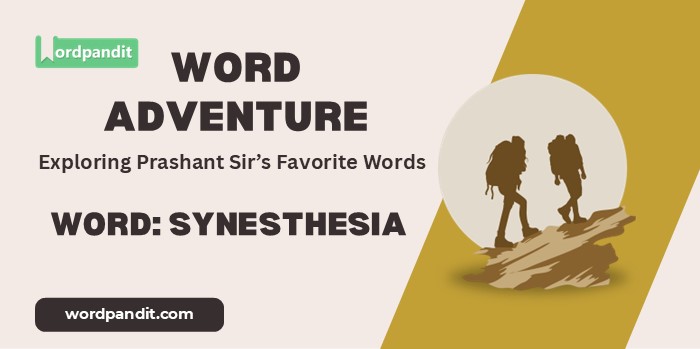Word Adventure: Synesthesia
The Headline
“Synesthesia: When Numbers Have Colors and Music Has Taste”
The Scoop
In the intricate landscape of human perception, some individuals experience the world in uniquely blended ways. ‘Synesthesia’ is the word that describes this remarkable phenomenon – where stimulating one sense automatically triggers experiences in another. Let’s explore how this captivating condition enriches our understanding of human consciousness.
Let’s Break It Down
The Plot Thickens
The story of ‘synesthesia’ as a recognized phenomenon begins in the late 19th century, though people had been experiencing it for millennia. The term combines Greek elements to literally mean “joined perception” – a perfect description of how synesthetes experience their world.
Initially dismissed by many scientists as imagination or metaphor, synesthesia gained credibility through rigorous research in the late 20th century. Studies showed that synesthetes’ experiences were consistent over time – if the number 5 was red for someone, it stayed red throughout their life.
Today, we recognize multiple types of synesthesia, from grapheme-color (seeing letters or numbers in specific colors) to chromesthesia (hearing colors) to lexical-gustatory (tasting words). Each type offers unique insights into how our brains process sensory information.
Word in the Wild
The Twist
Here’s an intriguing aspect of synesthesia: while it’s considered a ‘condition’, many synesthetes view it as a gift rather than a disorder. In fact, synesthesia appears to be more common among artists, musicians, and creative professionals. This suggests that what we might consider an unusual crossing of sensory wires might actually enhance creative thinking and expression. Perhaps we all have a touch of synesthesia when we speak of ‘warm’ colors or ‘sharp’ cheese!
Make It Stick
Synesthesia: When your senses decide to have a party and everyone’s invited!
Your Turn
Do you experience any form of synesthesia? Or have you ever wondered what it might be like to taste colors or see sounds? Share your thoughts or experiences in the comments below. Let’s explore how different people perceive the world in unique ways!
Down the Rabbit Hole
- Curious about different types? Research the many forms of synesthesia, from mirror-touch to spatial-sequence.
- Interested in famous synesthetes? Explore artists like Kandinsky or musicians like Duke Ellington who had synesthesia.
- Want to understand the science? Look into neurological studies on cross-modal perception and brain connectivity.
The Last Word
As we conclude our exploration of ‘synesthesia’, I hope you’ve gained appreciation for this fascinating phenomenon that reminds us how diverse human perception can be. Whether you experience synesthesia yourself or simply marvel at its possibilities, it shows us that there’s no single ‘right’ way to perceive the world. Until our next word adventure, this is Prashant from Wordpandit, encouraging you to explore the wonderful ways our senses can surprise us!











